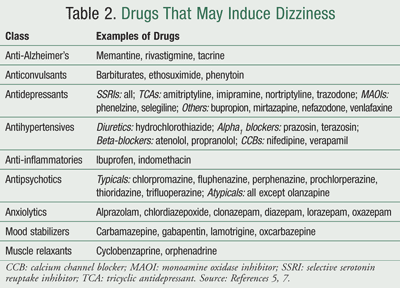
The aim of this work is to review the prescriptions and especially contraindications of drugs currently used in clinical practice in older patients with stability issues.Ĭonventionally, disorders that cause vertigo (the sensation of self-motion when no self-motion is occurring) or dizziness (the sensation of disturbed or impaired spatial orientation without a false or distorted sense of motion) have been classified into three broad categories: A wide range of neurotransmitters underlie this highly complex neural activity, among which glutamate, acetylcholine, and glycine play a relevant role and are further modulated by histamine, adrenaline, and noradrenaline.
#Meds for vertigo series
As a result of the integration of these three different perceptive inputs, the central nervous system (CNS) generates a series of reflexes that guarantee proper balance.

Normal balance is the result of the interaction between the inputs derived by the peripheral vestibular system (semicircular canals and otolith organs), which are integrated in the vestibular nuclei with proprioceptive and visual information. Hearing loss has also been recognized as a predisposing factor to accidental falls. Vertigo and dizziness affect 15–20% of the adult population and contribute to falls, especially in older patients, among whom 23% are subjected to fall-associated trauma at least once a year. In the majority of patients, vestibular and physical rehabilitation are strongly advised and rarely contraindicated. Moreover, overuse of pharmacotherapy for the management of vertigo in the elderly may prevent the development of the central compensatory mechanism that sustains both static and dynamic imbalance after a vertiginous crisis. Interactions with other drugs should be considered in the choice of a particular course of treatment. The main focus of this article is to review the forms of pharmacotherapy for vertigo, especially with regard to older patients, who may be treated simultaneously with other drugs for different comorbidities. Overall, vestibular disorders account for 48% of vertiginous complaints in the older population. Among the diseases that may be associated with vertigo, the three classes of otological, central, and functional (psychological) dizziness may be distinguished. It has been reported that 15–20% of the adult population experiences these debilitating symptoms. Dizziness, imbalance, and vertigo constitute some of the most common complaints in older patients, and risk of falling is the most frequent and worrying consequence. The number of older people has been increasing over recent decades in Western populations.


 0 kommentar(er)
0 kommentar(er)
